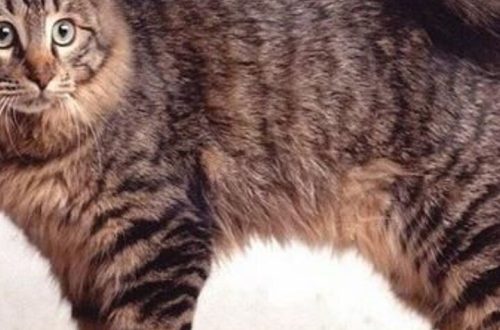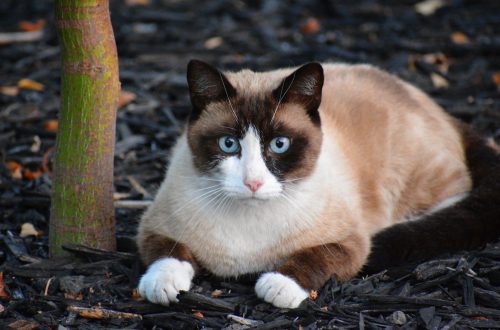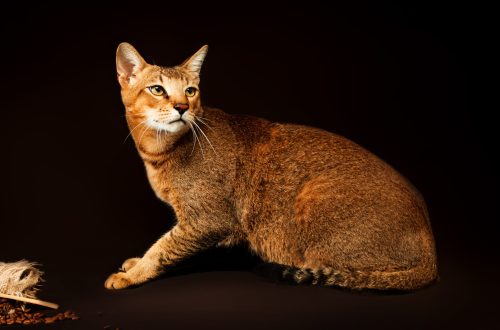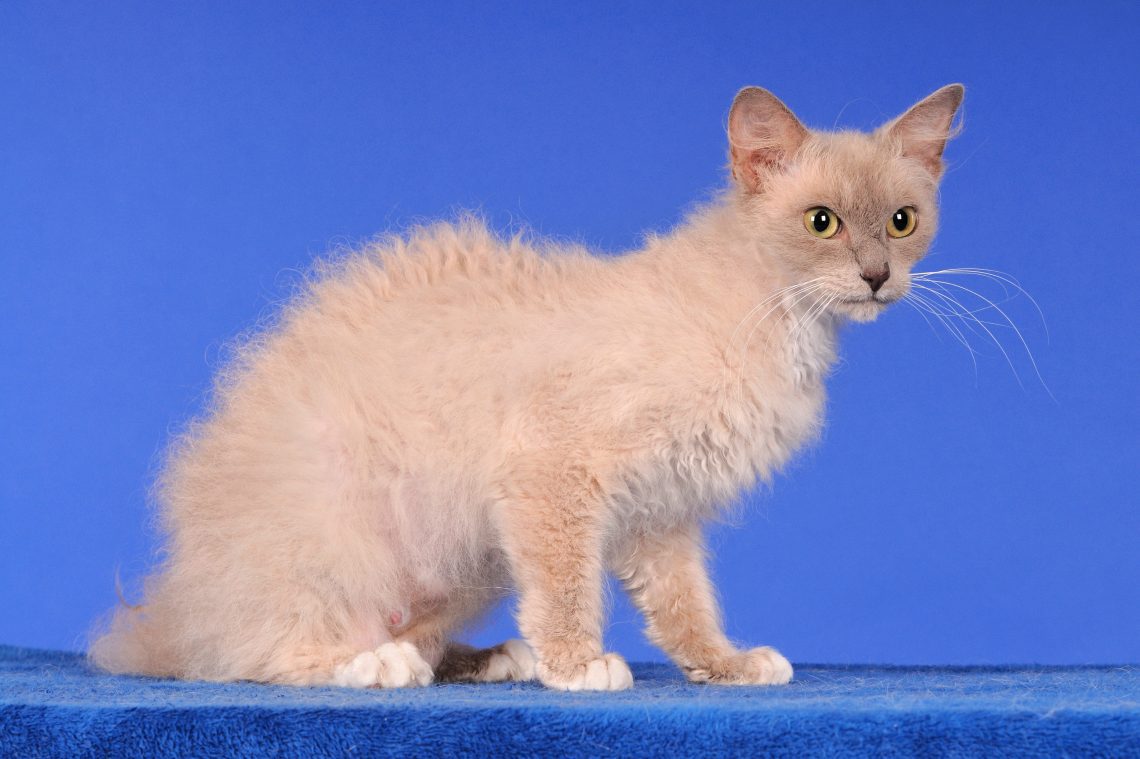
LaPerm
The LaPerm is a curly-coated Rex-type breed descended from domestic American cats. According to felinologists, this is one of the most attached to humans and contact breeds.
Contents
Characteristics of LaPerm
| Country of origin | USA |
| Wool type | Shorthair, longhair |
| Height | up to 28 cm |
| Weight | 3–6 kg |
| Age | 10–14 years old |
Basic moments
- In Russia, the breed is considered rare, so it is rather difficult to meet its representatives anywhere other than exhibitions.
- LaPerms are moderately talkative, but their meowing is quiet and does not irritate the ear.
- This is one of the most “fast-transforming” cat breeds. For the first 6 months of life, the exterior of the animal can change dramatically.
- The coat of a purebred LaPerm should look a little sloppy, as if the pet is wet and not completely dry.
- LaPerms love tactile contact, so get ready for constant hugs and “stomping” cat paws on your lap.
- Many breeders position their wards as hypoallergenic pets. In fact, laperm saliva contains the usual amount of Fel d1 protein, which causes a negative reaction of the immune system. However, due to the lack of undercoat, which cats like to lick, there are fewer allergens on the coat of laperms.
- Despite the fact that the standard considers short-haired and long-haired LaPerms to be equivalent, it is the second variety of the breed that is most popular with breeders.
- The reproductive instinct of LaPerms is slightly muted, so cats do not consider the absence of a partner during estrus to be a global tragedy.
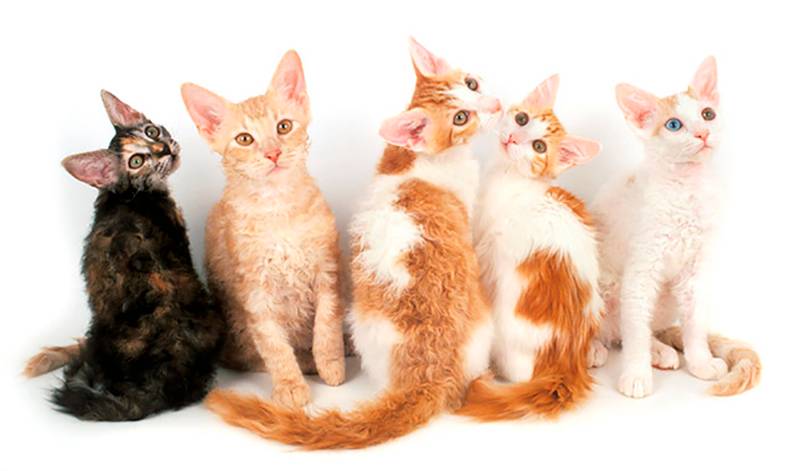
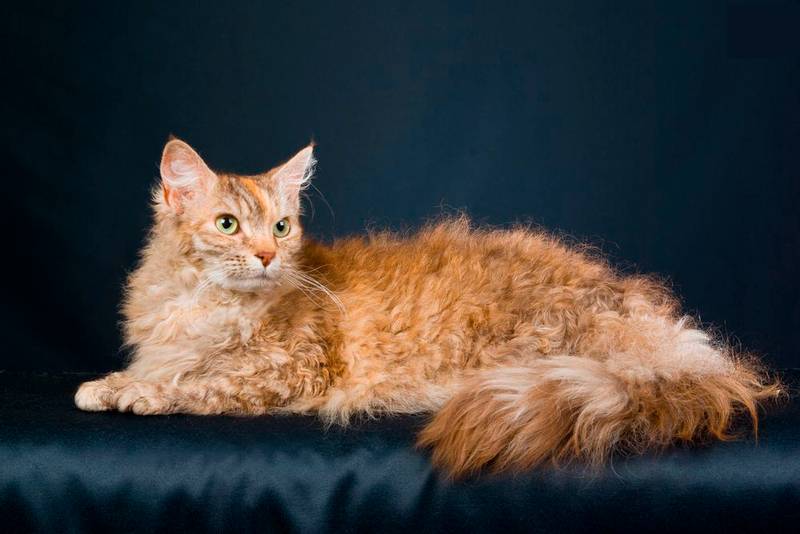
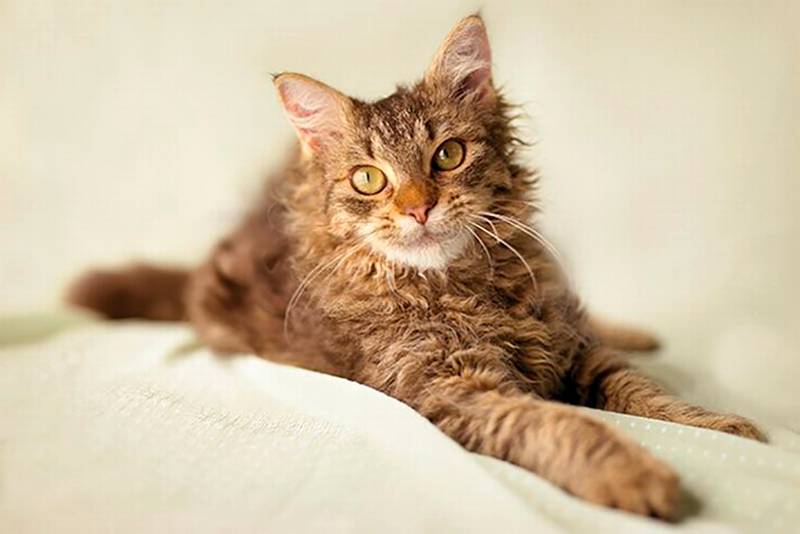
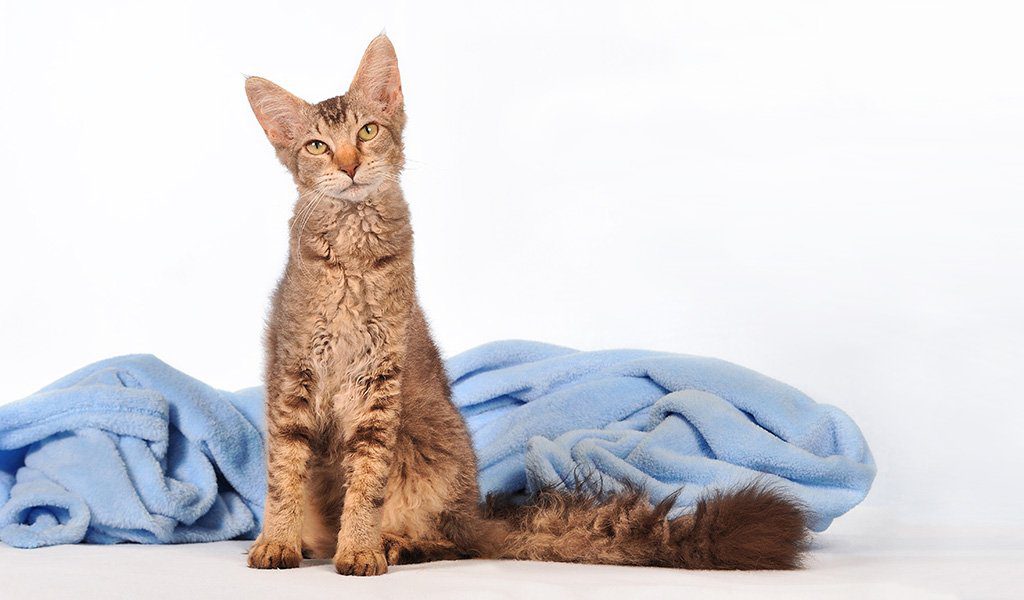
LaPerm is a good-natured, purring and notorious glutton with a wavy coat that gives his appearance a slight “tramp” chic. This is one of the most peaceful and sociable cat breeds, so there is simply no chance not to find a common language with its representatives. From the constant attention and tenderness of the laPerm, you can get a little tired, but the owner will definitely not be able to reproach the pet for indifference and the desire for independence, characteristic of most cats.
History of the LaPerm breed
LaPerms are the product of a random genetic mutation that aroused the interest of felinologists in the 80s of the last century. The first owner of a curly cat was an American farmer Linda Coehl, after an unusual hairless baby appeared in one of the litters of her cat Speedy. The woman decided to leave the kitten out of pure curiosity and was very surprised when, after a few weeks, the animal was covered with curly fur.
The grown cat was christened Kerli and sent to a regional exhibition, where he was examined by experts. As a result, it turned out that Curley’s curls are the result of an unknown mutation that has not been found in any other cat. In order not to miss the opened prospects, the farmer decided to independently develop a new breed. As a result, from 1992 to 1994, four curly cats were noted at the exhibition in Portland, whose appearance became a kind of impetus for the registration of an official laperm cattery called “Kloshe Cattery”.
An interesting fact: the word “laperm” is derived from the English term perm, which means perm. The French article la was added to the name spontaneously – Linda Coehl felt that such a prefix would help animals draw attention to themselves.
After the announcement of the breed and the writing of its standard in 1997, LaPerms were constantly crossed with someone. It is known, for example, that today’s individuals carry the genes of Siamese , as well as Manx and domestic shorthair cats. Since 2020, interbreed mating of curly cats has been officially banned, and the breed has been declared closed. As for the recognition of felinological federations, today laperms are registered by TICA, ACFA, CFA, WCF and FIFe. In addition, they are standardized by the national felinological federations of France, Australia, South Africa and the UK.
Video: La Perm
Laperm breed standard
LaPerma is difficult to confuse with representatives of other curly breeds, although some experts note their similarity with the Ural Rex . The main distinguishing feature of cats is that they can radically change their image. So, for example, after each molt, the structure of the woolen curl of the laperm becomes more or less pronounced, which is why the animal looks like it has been completely reborn. Similar transformations occur with the mustache, which either sticks out in different directions, or curls into “springs”. Oddly enough, sterilization can affect the quality of laperm wool. Castrated cats practically do not shed, and their curls become noticeably softer. At the same time, in individuals who are too sexually active, the lower abdomen and the outer surface of the thighs go bald.
La Perm Head
A characteristic anatomical feature of the breed is a wedge-shaped skull with soft rounded outlines. The broad muzzle has a medium to strong pinch, as well as flexible long vibrissae on puffy pads. An imaginary perpendicular line can be drawn from the nose to the strong chin. The upper part of the forehead is flat, the transition line between the back of the head and the neck is very smooth. There is a light stop on the nose, which should be perfectly palpable.
LaPerm Ears
The base of the cup-shaped ear gently continues the line of the skull. The size of the ear cloth is from medium to large. The entire ear surface is well pubescent; in long-haired laperms, the hair forms neat brushes on the tips of the ears, like in a lynx.
La Perm Eyes
A relaxed purr has almond-shaped eyes, but if the laperm is alert, the eyelid slit is markedly rounded. The eyes are slightly oblique and at a considerable distance from each other. The color of the iris does not depend on the color of the animal and can be blue, golden, copper, green, yellow, and also the color of the sea wave. Heterochromia is considered an acceptable breed trait.
LaPerm Frame
Laperms have average body dimensions with a relatively elegant skeleton. The solidity of the addition is acceptable for males, if there is no rudeness and disproportions of the skeleton behind it. A distinctive anatomical feature of the breed: the hips are always located above the shoulders.
La Perm Paws
Laperms have not short, but not excessively long limbs with a medium massive skeleton. The forelegs are often shorter than the hind legs, the paws are neat, rounded in shape.
LaPerm Tail
The tail has harmonious proportions, gradually tapering from the base to the end.
Wool
The long-haired variety of laperm is an animal with a light semi-long coat that changes its density with the seasons and in accordance with age. In mature individuals, a curly “collar” usually grows on the neck, the tail is always with a “plume”. The structure of the hair can vary from animal to animal. All long-haired cats have both just wavy “fur coats” and with curls, but the second option is preferable.
The ideal type of coat is as loose as possible, lagging behind the body so much that the skin is perfectly felt through it. The steepest curls and curls are located in the “gate” area, at the base of the ears and tail. It is acceptable that wavy “strands” hang from the spine on the sides and stomach. In general, the principle applies to long-haired laperms: the sloppier the look of the pet, the better.
Short-haired LaPerm – a cat with short or medium length hair lagging behind the body. The coat is airy, weightless, but at the same time quite hard texture. There is no fluffy plume, and the tail resembles a brush in its appearance. Six itself can be simply with waves like corrugation or classic curly. Tassels on the ears and a voluminous “collar” for a short-haired Laperm are not considered mandatory.
Color
The standard allows any shades of wool and their combinations. In particular, LaPerms can be solid colors: black, white, red, cream, fawn, blue, cinnamon and lavender. There are also individuals with a shaded coat type, when the undercoat remains white and the hair is tipped. These LaPerms have noses, eyes, and lips with colored strokes to match the tipping, and the color has several gradations throughout the body, from a dark tone on the back to almost white on the belly and chin. Registered shaded colors: silver, chinchilla chocolate, tortie, cream, cinnamon, fawn, lavender cream, tortoise chocolate, golden, cream fawn, tortie cinnamon, cream blue, golden chinchilla.
A separate category of laperm has a smoky coat. Distinctive features of such cats: white undercoat, which is clearly visible when the animal moves, deeply tipped hairs, a colored mask on the muzzle and points. Haze colors follow traditional solid colors, complemented by variations such as lavender cream, chocolate tortoiseshell, fawn cream, cinnamon tortoiseshell.
Disqualifying vices
Cats with the following exterior defects are not allowed in the show ring:
- stocky build (cobby);
- excessively short limbs;
- any defects in the tail;
- straight wool;
- strabismus;
- fingers more or less than the number specified by the standard.
The nature of the laperm
LaPermas are fluffy psychotherapists and professional chiropractors rolled into one or, more correctly, in one muzzle. Cats are unusually sociable and will sell their souls in order to stomp on the owner’s lap as often as possible, sit on his shoulders or doze off at his side. Many breeders claim that cats are able to diagnose impending host diseases, especially when it comes to colds. Usually the purr seeks to lie down on the place, which, in his opinion, needs a session of “cat therapy”. So, if the laperma is drawn to take a nap on a person’s chest, it is possible that in this way the pet is trying to arrange for the owner to warm up the lungs and cure the cough.
Representatives of the breed are moderately good-natured and sociable. LaPerms easily establish contacts with children, do not fight for territory with other representatives of the feline brethren, and steadfastly tolerate the neighborhood with dogs, unless they terrorize them with constant nagging. The dream of every member of this curly-haired family is to have as many living creatures as possible in the house at the same time, able to cover his need for communication and hugs. On the street, such a pet willingly goes “on the hands” to strangers and does not run away from dogs, which can end tragically for the animal, therefore, in the case of laperms, there can be no question of any free range.
The breed is not indifferent to “mountaineering”, so its representatives always strive to climb higher. Everything can become a peak worthy of conquest: from the closet to the master’s shoulders. Manifestations of the innate sociability of laperms can be observed every day. Kotofey will try to accompany the owner in all his household affairs, not forgetting to remind him of his own presence in moments of rest. Before you go to the breeder for a curly kitty, think carefully about whether such a pet will tire you and whether your work schedule will allow you to pay enough attention to the cat. Keep in mind that loneliness for laperm is the worst of evils.
Education and training
With all the softness of the nature of the laperms, they do not like to learn anything at all. Moreover, these curls do not accept punishment, and do not draw any conclusions from the master’s reprimands. This disadvantage is compensated by the fact that the breed does not have a particular predilection for pranks, so that in the vast majority of laperms are sociable goodies who are not characterized by destructive tricks.
Almost all that the owner can achieve from a representative of the breed is the ability to use the tray and the habit of responding to his own nickname. You don’t have to waste time studying other commands with laperms – even with titanic efforts, the result will be far from brilliant. For the rest, adhere to the rules of upbringing common to all cats: establish a system of prohibitions, treat puddles on the floor indulgently during the kitten’s socialization period, and do not encourage furniture scratching.
It is useless to punish the laPerm for excessive jumping ability. The breed cannot imagine its existence without “flights” on furniture modules and refrigerators. If you want to protect certain surfaces from the encroachment of cat paws, apply citrus essential oils to them, the smell of which purrs cannot stand. It is also unlikely that it will be possible to accustom the laPerm to doze off on his couch. That is, of course, the cat will periodically visit its mattress, but most of the time it will prefer to spend at the side of the owner. Accordingly, if you like to relax at night without a curly “heater” at your side, it is better to close the door to the bedroom and not respond to the pleading meow that is heard behind it.
Maintenance and care
Since the street is full of unpleasant surprises for an overly trusting laperm, the apartment should remain its main habitat. Of course, you can take the cat out for a walk, but for this you will have to get a harness that will limit the area of \u200b\u200bmoving the pet and help out in an emergency. A high gaming complex will help minimize cat jumps on furniture – usually laperms like such sports equipment, and they willingly switch their attention to them.
Hygiene and hair care
The owner of the LaPerm will not need furminators. Deprived of the downy layer of hair, it does not get confused and does not form tangles. Usually, cats of this species are recommended to be combed “for show” and for the sake of massage, in order to improve blood flow in the upper layers of the skin. You will have to pick up a brush no more than once a week, and the laperms themselves are patient with this procedure.
Approximately once a year, the representatives of the breed renew their hair, which is very easy to notice – the shedding laperm begins to scratch and tear out bundles of its own wool with its paws. In such cases, it is better for the animal to help and pluck out dead hairs. Often, after home stripping, the cat becomes completely or partially bald, and this is normal. After a month or two, the curls on the pet’s body will appear again. Off-season molting is also observed in giving birth cats, which should also be taken calmly.
The bodies of laperms are vulnerable to various blood-sucking parasites, so curly cats bring fleas home many times more often than other breeds. For this reason, always keep a supply of anti-ectoparasites. Otherwise, you do not need to resort to any specific procedures. Wash LaPerms with shampoo for curly breeds and only if necessary. Dry the bathed animal with a hairdryer. Of the mandatory actions – wiping the eyes with a clean cloth dipped in a special lotion or iced tea, trimming the nails, cleaning the ears with hygienic drops.
Feeding
A special diet for laperms was not developed, since these descendants of farm mousers do not have problems with digestion. The owner chooses the type of food for the pet – it can be either industrial “drying” of a class not lower than super-premium, or natural food, which is based on animal protein. By the way, they don’t complain about the appetite of the laperm and never refuse the supplement, but it’s undesirable to follow their pleading glances if you don’t want to treat your pet for obesity and related ailments later.
The standard diet of an adult laperm: lean meat and offal of all kinds, fish fillet (strictly marine fish), vegetables (carrots, beets, pumpkin), low-fat dairy products, greens, chicken or quail egg yolk, unrefined vegetable oil as a dietary supplement. Be sure to periodically introduce cat dietary supplements and vitamin complexes into the menu, but this rule applies mainly to animals that eat natural food. Laperm, absorbing dry food, receive all the necessary trace elements.
They feed curly purrs with the same frequency as all cats, already in six months, transferring teenage laperms to a three-time diet. At 8-12 months, the cat should be fed twice a day, unless it is a pregnant or sick cat. The last two categories of pets are usually “enhanced” nutrition and introducing additional “snacks” to give support to the body.
Health and disease of laperms
This is one of the healthiest breeds. LaPermas are not subject to genetic diseases in principle. The only thing they should be protected from is common cat infections. The breed’s predilection for overeating can also cause additional difficulties, so do not neglect the control weighing. If you notice that the forms of the laperm are becoming too corpulent, the curly glutton should be put on a diet.
How to choose a kitten
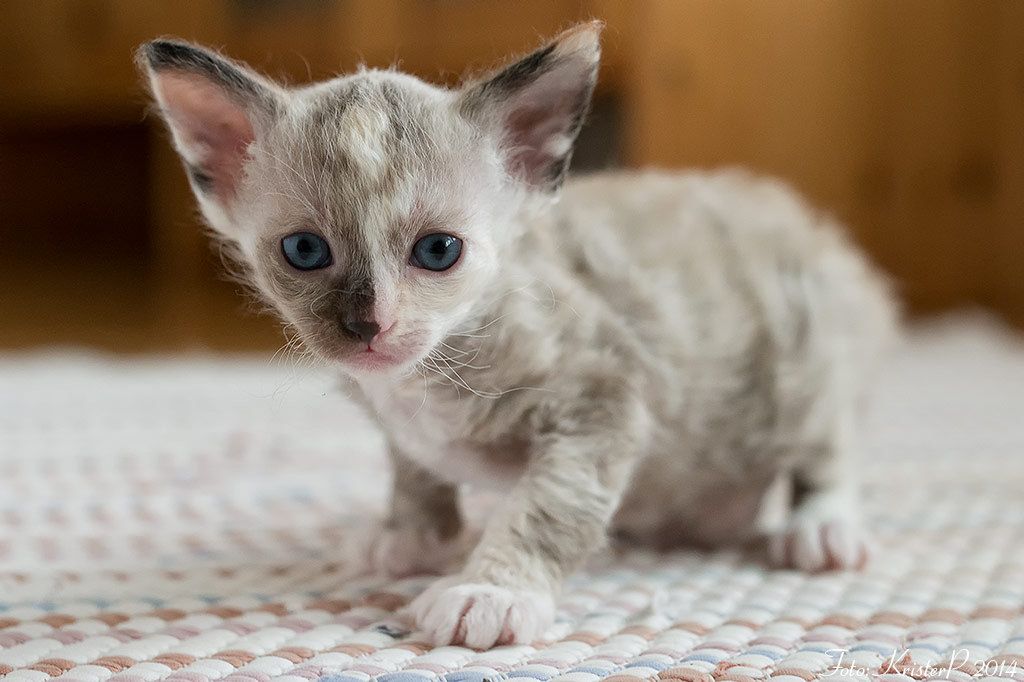

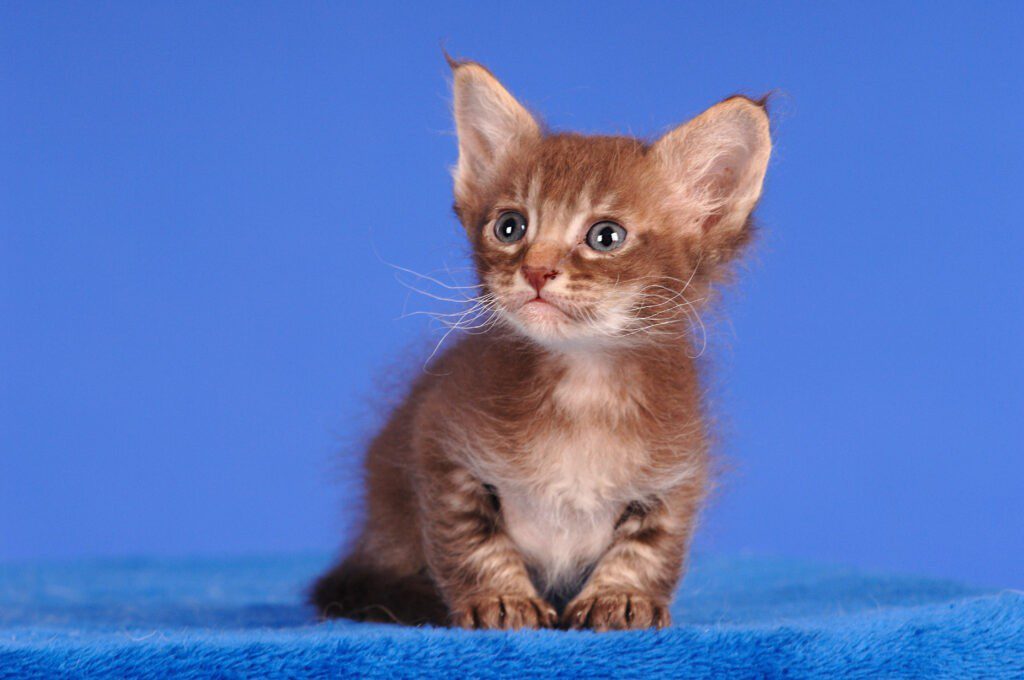

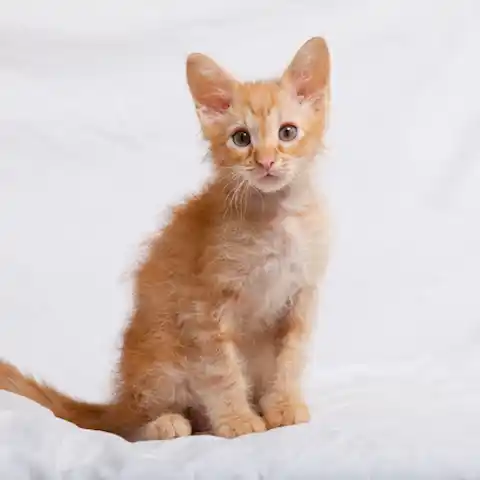

- A stable coat is formed in Laperms by 6 months. Accordingly, you can take a kitten earlier than the indicated age only from a trusted breeder, otherwise there is a risk of acquiring a mestizo that will never become truly curly.
- Some kittens under one year of age may suddenly go bald. If you come across a completely hairless animal, do not panic – in a purebred LaPerm, the coat will recover over time.
- Always specify the age of the mother cat and the number of her births. The optimal age for the first mating of laperms is a year and a half. It is undesirable to take a baby from an individual who gives birth several times a year – in most cases, such kittens have a weakened immune system, and sometimes they are not viable at all.
- When purchasing a grown animal, pay attention to the quality of the coat: the LaPerm should not have a pronounced undercoat, only a thin guard hair.
- Pay close attention to the documents that the seller shows. Be sure to study the act of examining the litter by the breeding commission. If the breeder does not have such a document, most likely, the kittens have problems with the purity of the pedigree and conformation.
- Sometimes flat-haired kittens are born in litters of laperms, which are not worth buying in the hope that over time their “fur coats” will begin to curl. The chances of this happening are about 1:10.
Laperm price
In Russia, the breed continues to be exclusive, therefore, advertisements for the sale of its representatives appear extremely rarely in Runet. There are also few domestic nurseries where one could buy a purebred LaPerm. Moreover, most of them do not have their own websites and notify about the availability of kittens available for reservation only through pages on social networks. As for the cost, in the USA, buying a pet-class curly kitten will cost at least 300 USD, and an animal with the makings of a future show champion – 600 USD.





